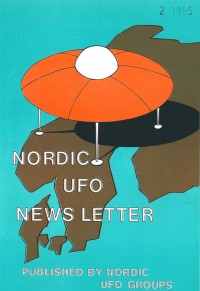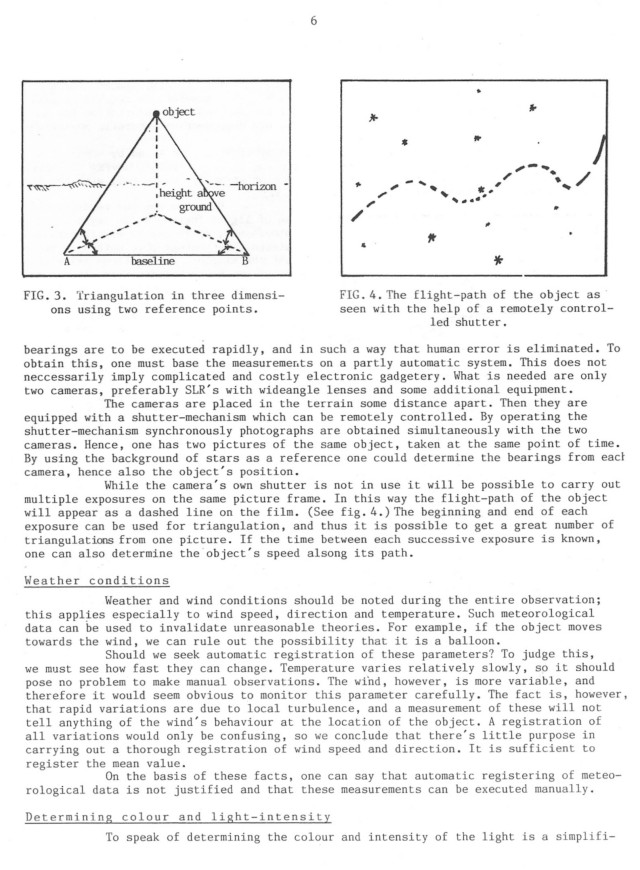Nordic UFO Newsletter1983, February issue, page 6. |

|

|
|
FIG.3. Triangulation in three dimensions using two reference points. FIG. 4.The flight-path of the object as seen with the help of a remotely controlled shutter. bearings are to be executed rapidly, and in such a way that human error is eliminated. To obtain this, one must base the measurements on a partly automatic system. This does not necessarily imply complicated and costly electronic gadgetery. What is needed are only two cameras, preferably SLR's with wide angle lenses and some additional equipment. The cameras are placed in the terrain some distance apart. Then they are equipped with a shutter-mechanism which can be remotely controlled. By operating the shutter-mechanism synchronously photographs are obtained simultaneously with the two cameras. Hence, one has two pictures of the same object, taken at the same point of time. By using the background of stars as a reference one could determine the bearings from each camera, hence also the object's position. While the camera's own shutter is not in use it will be possible to carry out multiple exposures on the same picture frame. In this way the flight-path of the object will appear as a dashed line on the film. (See fig. 4.) The beginning and end of each exposure can be used for triangulation, and thus it is possible to get a great number of triangulations from one picture. If the time between each successive exposure is known, one can also determine the object's speed along its path. Weather conditions Weather and wind conditions should be noted during the entire observation; this applies especially to wind speed, direction and temperature. Such meteorological data can be used to invalidate unreasonable theories. For example, if the object moves towards the wind, we can rule out the possibility that it is a balloon. Should we seek automatic registration of these parameters? To judge this, we must see how fast they can change. Temperature varies relatively slowly, so it should pose no problem to make manual observations. The wind, however, is more variable, and therefore it would seem obvious to monitor this parameter carefully. The fact is, however, that rapid variations are due to local turbulence, and a measurement of these will not tell anything of the wind's behaviour at the location of the object. A registration of all variations would only be confusing, so we conclude that there's little purpose in carrying out a thorough registration of wind speed and direction. It is sufficient to register the mean value. On the basis of these facts, one can say that automatic registering of meteorological data is not justified and that these measurements can be executed manually. Determining colour and light-intensity To speak of determining the colour and intensity of the light is a simplifi- |